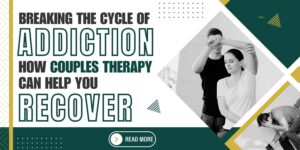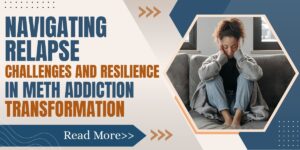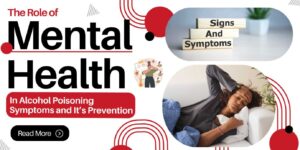Experiencing or seeing your loved ones dealing with addiction or substance abuse can appear to be a hopeless situation. Further, the prevailing myths and stigma surrounding the topic add to the woes and make it very difficult to seek help. Just so you know – addiction is not the end of the world, there are ways available to get better. Addiction of any kind is a treatable condition and with the right guidance and medical attention, any person suffering from addiction can lead the path of recovery and attain sobriety.
However, when thinking about addiction treatment, an image from TV and movies of “going off to rehab” floats in our minds. The thought of quitting regular life and living in isolation in a restrictive and expensive situation often becomes taxing. While such can be a mode of treatment for many, it may not be the one that you need to overcome the abuse. Amidst, outpatient Addiction Treatment can emerge as a better suitable for you and can lead you to the path of recovery.
Our navigators will help you take back control of your life.
When you call our helpline, an admissions navigator is there to listen to you, answer any questions you have, and provide the support that you need—all 100% confidentially.
Addiction Outpatient Treatment Program is a treatment method wherein the patient is not required to leave the comfort of his/her home and live at a rehab center but can follow a treatment by simply making scheduled visits to doctors, and attending therapy sessions regularly. This non-residential approach allows much more flexibility for people to carry on with regular daily life – they can continue to go to work, attend school, or even go on holidays because treatment is scheduled around the patient’s availability and with their consent.
The prime difference lies in the core concept of these treatments. As the name suggests, an inpatient treatment program involves necessary hospitalization where the patient is treated under the continuous surveillance of doctors and caregivers. Such programs are often helpful for those who are suffering from severe addiction issues and require an acute level of care. It provides an immersive and comprehensive experience as the patient stays in the rehab facility and is given 24-hour medical supervision and community support.
However, this does not make the Addiction Outpatient Treatment Program any less effective. Instead, outpatient treatment programs are ideal for patients diagnosed with mild to moderate levels of addiction and require less intensive care. As in the treatment method, the patient is not separated from regular day-to-day life, he/she gets to have a flexible schedule of therapy sessions ranging from 3 to 30 hours a week.
Treatment duration becomes the next point of difference between the two. While an Inpatient treatment program can last for a longer period of up to one year or as needed, an Addiction Outpatient Treatment Program usually spans between 30-90 days. The longer time duration often makes inpatient programs an expensive deal. Thereby, making outpatient treatment program more cost-effective that often get covered by insurance.
It should be noted that apart from the aspect of hospitalization both programs also differ in terms of approach. Therefore, the best suitable mode of treatment is often decided by the doctor based on factors such as level of severity, duration of addiction as well as other nuances in the diagnosis. Rest assured, both the treatment mentions have recorded a high success rate in helping patients with substance use disorder.
There is no one size fits all solution when it comes to treating addiction as every individual has a different story, there are many factors that are essentially considered when selecting the program method. The Diagnostic and Statistical Manual of Mental Disorders, Fifth Edition (DSM-5) published by the American Psychiatric Association (APA), which recommends treatment for addiction and mental health disorders outlines 4 categories of substance abuse – physical dependence, risky use, social problems, and impaired control. This further spreads across 11 identifying criteria:
- Excessive or prolonged consumption than the recommended dose of the substance
- Uncontrollable urge to continue substance use
- Taking longer than usual time to recover from the substance abuse
- Frequent cravings to use the substance
- Difficulty in concentrating on regular life routine
- Experiencing troubles in a relationship due to continuous use of the substance
- Ignoring social, personal, and professional life
- Continuing substance abuse despite experiencing physical and mental health issues.
- Needing more of the substance to get the effect you want (tolerance)
- Development of withdrawal symptoms, which can be relieved by taking more of the substance
The severity of the abuse is considered ‘mild’ if the patient is displaying 2-3 of these symptoms; ‘moderate’ if displaying 4-5, and ‘severe’ if 6 or more symptoms are present. Outpatient Addiction Treatment is best suited for patients experiencing mild to moderate symptoms. However, the decision is necessarily based on the clinical diagnosis, the severity of the addiction, and recommendations by doctors.
In general, the steps to sobriety in an Addiction Outpatient Treatment Program are a combination of physical, occupational, and speech therapy. Some programs may also provide other services like nutritionists, counselors, and other aid from rehabilitation professionals if needed to enhance the recovery and rehabilitation process. However, it is always prudent to have some knowledge about the various steps that lead to the path of sobriety: few terminologies with regards to sobriety that may come in handy while looking for an outpatient treatment program:
This is generally the first step of addiction treatment in most cases of substance abuse. In the detox process, all traces of drugs/ alcohol or other abused substances are removed from the body so that the patient becomes physically and mentally fit for the treatment ahead and can receive the therapy better.
Detox is important as during an addiction, the patient’s body develops a dependency on the abused substance. Consequently, the body loses its natural ability to create a defense mechanism or fight against any foreign and unwanted element. Therefore, during a detox process, the body is prepared to live off the abused substance and return to its natural form by gradually reducing the dosage of the substance of addiction.
Detox is a delicate process and should be necessarily taken under the guidance of a medical professional. It is advisable to go only for medically assisted detox procedures where trained healthcare specialists take care of the patient to minimize the negative effects of withdrawal and ensure their safety. Trying detoxing remedies at home may lead to severe and lethal complications.
During a detox process, when the presence of a substance becomes low or absent in the body, it becomes difficult for the brain to adapt to the new changes, even when occurring gradually. As a result, the patient often experiences pain or other discomforts and bothering symptoms that are common as withdrawal symptoms. These symptoms range from cravings to hallucinations. Withdrawal symptom of any kind is uncomfortable at best and miserable at worst.
Also, withdrawal symptoms can differ from one patient to another. The severity of these symptoms depends on factors like how long the patient has been addicted, the type of substance abused, the amount of drug consumed, and his/her general mental and physical health.
Some common physical withdrawal symptoms include nausea, diarrhea, vomiting, shaking and shivering, sweating, increased heart rate and blood pressure, headaches, abdominal cramps, muscle and bone pain, and exhaustion, while some of the common psychological withdrawal symptoms are anxiety, depression, mood swings, paranoia, agitation, insomnia, and vivid and unpleasant dreams. However, experiencing hallucinations, delirium and seizures fall under severe withdrawal symptoms. To cope with the withdrawal symptoms, patients are given controlled medications that help them with anxiety and depression and ensure adequate sleep.
While a typical detox process can stretch anywhere between 7 and 10 days, it can vary from one patient to another. After detoxing and managing withdrawal, patients will be ready for the next step of the treatment where they will receive further medication and psychological therapy.
While medication, in general, helps in minimizing the withdrawal symptoms such as decreasing cravings and re-establish normal brain functions, they are used to prevent relapse as well. The type of medication depends on the type of abuse and addiction, for example, medication for the treatment of opioids (heroin, prescription pain relievers) differs from that of tobacco (nicotine), and alcohol addiction.
In addition to prescribed medication, behavioral therapies are also a major part of addiction treatment. Such therapies help patients to modify their attitudes toward drug use and encourage healthy life skills. While these therapies are often paired with medication, they can also be prescribed in isolation depending on the course of treatment of the patient. Some of the most common types of behavioral therapies are:
helps the patient to gain consciousness of activities that trigger the use of a substance in them
is designed to include adolescents and their family members to understand the negative influences and drug abuse patterns of the user.
which convinces the affected individuals to change their behavior and pursue treatment
(contingency management), encourage abstinence from drugs through positive reinforcement.
Completing the addiction treatment course is only half the battle as it is more important to continue with the new lifestyle and maintain the achieved sobriety to ensure a long-lasting recovery. Aftercare plans may include the following:
- Family Counseling
- Recovery support groups
- Psychiatric appointments
- Ongoing psychiatric medications, and/or medication-assisted treatment
A sober, healthy, supportive environment is a must for any addiction patient. Family, friends, home, and other surroundings play a great role in aftercare and motivating the patient to continue on the path to long-lasting recovery.
Check to see if your insurance is in-network at an American Addiction Centers location
We’ll instantly check the coverage offered by your insurance provider.

While choosing the type of treatment program primarily depends on the severity of the addiction, both outpatient and inpatient treatment programs have their benefits and gains. Below are some lucrative benefits of outpatient treatment programs.
Fits schedule: Since an outpatient treatment program does not require hospitalization, it offers schedule flexibility to the patient, thereby giving a lot of control over the treatment duration. In an outpatient treatment program, a patient can decide the factors such as how often to go, when to go as well as choose the medical professional of choice. This type of control is important because it allows the patient to tailor outpatient rehab to meet their specific needs.
Allows more privacy: In-person visit/ one-on-setting in an outpatient treatment program helps the patients to ensure more privacy. As it is structured to a one-on-one setting premise, it prevents the patients from the harshness and prejudices of the world.
Gives more affordability: While, the cost of outpatient rehab facilities varies vastly and is based on several aspects like the location, treatments offered, amenities provided, and medications used during the treatment, it is much more affordable when compared to other types of treatment programs. Additionally, more often than not, the cost of outpatient treatment programs gets covered under insurance policies.
In general, Addiction Outpatient Treatment programs are carried out in more formal places such as healthcare facilities or counselor’s offices. There are different types of outpatient rehab options available based on various factors, like the substance, abuse, the individual’s severity of addiction, and the stage of recovery the patient is at. Broadly speaking, there are three categories of Outpatient Treatment: Partial Hospitalization Programs (PHP), Intensive outpatient programs (IOP), and Support Groups.
Partial Hospitalization Programs (PHP): Among all the outpatient treatment program settings, PHP is the most intense one as it involves the highest level of care. A patient participating in PHP commits to attending therapy sessions 5-7 days a week for several hours a day.
The program consists of ongoing therapy, group counseling, helping in forming a strong network of support, and also recreational therapy like learning or developing skills in art or music. Also, this program helps the patients have more control over his/her mind and body.
Being an outpatient program, those who opt for a PHP, do go back to their home after the sessions, but continuing with the daily life routine becomes challenging because of the intense level of the treatment.
Intensive Outpatient Programs (IOP): An intensive outpatient program is ideal for those who are serious about quitting drugs but want to continue with their daily life responsibilities like work, school, or attending to family needs. An IOP establishes a treatment plan for each individual, which includes measurable and defined milestones or short-term goals to be achieved. As these goals are met, it indicates progress in the path to recovery and the number of hours of sessions over a week keeps decreasing.
Intensive outpatient programs consist of group therapy, relapse prevention education counseling sessions, and forming support groups. A patient needs to commit a few hours per week for a successful outcome in an Intensive Outpatient Program
Support Groups: Support groups are a secondary phase of addiction treatment. It is a term given to any kind of service that helps patients to continue moving forward toward recovery and encourages them to stick to sobriety. This phase comes after one has received the primary treatment.
The secondary phase comprises less intensive and tapered care. While licensed therapists facilitate the groups and formal aftercare programming, the role of peers and family becomes very crucial in providing support to the affected person.
A strong support system is crucial to the success of the Addiction Outpatient Treatment program and is most effective if the patient has a healthy environment and is surrounded by caring people in their regular lives. Both family and friends can be crucial in making sure that the patient lives in a healthy and trigger-free environment. Also, the patients must be supported financially and logistically to be able to seek treatment and complete the entire course of the addiction outpatient program.
Recovering from an addiction isn’t easy. The path demands determination as well as strong willpower and self-discipline to withstand the urges that may come during the recovery process. The strong relationships built during the recovery process often help the patients gain the support required to deal with the pain and suffering. Amidst, support and concern from friends and family act as a catalyst in the recovery process. Despite all, the result always depends on the dedication and commitment of the individuals.









